#Sacral bone
Text
y’all, my disability is disabling me rn
#honeybee posts#disabled#disability#spina bifida#spina bifida occulta#i hate it here#i just wanna game#my sacral nerves and bones hurt#help
5 notes
·
View notes
Photo

AI generated image, using the keywords “sacrum, flying, wings”
Watch for it in my upcoming Massage & Bodywork article on the SI joint:-)
#advancedmyofascialtechniques
#advancedtrainings
#tilluchau— at Advanced-Trainings.com
[Til Luchau]
* * * *
“The greatest mistake in the treatment of diseases is that there are physicians for the body and physicians for the soul, although the two cannot be separated.”
~ Plato
23 notes
·
View notes
Text
ough the pains
#bone pain joint pain and now sacral root pains shooting down my pelvis#what a pathetic creature i make#text
4 notes
·
View notes
Text
It's Time for Samhain! (Oct 31- Nov 1)
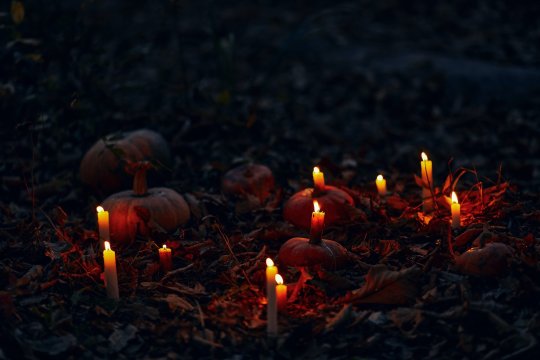
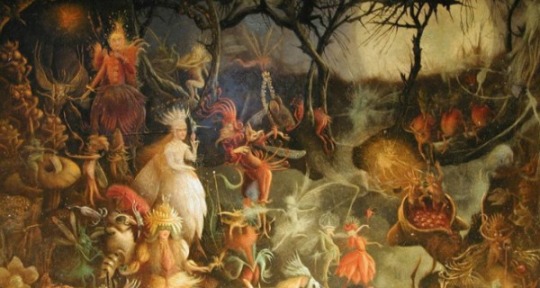
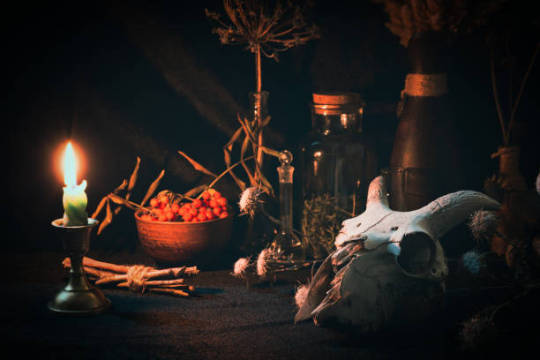
What is Samhain? In the Celtic calendar, Samhain marks the end of summer and the harvest season, and the beginning of the dark, cold winter months. It falls opposite Beltane on May 1, which represents the beginning of spring and the life-filled growing season.
It’s believed that the veil between the living and the dead is thinnest on Samhain. Historically, people were worried that they would encounter ornery spirits if they ventured outside on Samhain night, so they dressed as ghosts or wore masks to disguise themselves. Folks would leave treats on their front porch or place an extra setting at the table to welcome any friendly spirits who stopped by. You can see how these Samhain rituals easily morphed into our modern-day version of trick-or-treating in costume.
Nighttime bonfires were another of the long-standing Samhain rituals - this one was thought to help combat the impending darkness of winter and the fearful chill that accompanied the idea of roaming spirits. Because the veil between living and dead is believed to be the thinnest on this night, Samhain is also a powerful night for divination and spellcasting by candlelight.
Usual Symbols of Samhain:
Ale or Mead
Pumpkins
Skulls
Besom or Broom
Beans
Cauldron
Bats
Keys
Squash
Pomegranate
Nuts
Apples and Cider
Bones
Herbs and Plants for Samhain:
Rosemary – Associated with remembrance and is needed during this season in taking time to honor the memories of our ancestors and other lost loved ones. Can be used in an incense blend and at ancestor altar
Fall Flowers – Includes flowers like marigolds and chrysanthemums. Are associated with protection and chrysanthemums come in handy with connecting to the spirit world
Apples (the fruit, branches and blossoms) – Is considered sacred to a lot of gods. A good apple harvest means that the gods have shown the community their favor. You can use apples in different rituals, especially divination
Pomegranates – Is associated with the realm of the underworld and helps with communication with the dead. It is also associated with fertility of the fall.
Squashes, Pumpkins and Gourds – Is associated with abundance and provides sustenance for your family when the fields become bare and covered in snow. Is linked to psychic awareness and development and protection.
Mugwort – Is associated with divination and dreaming. Using Mugwort baths or incenses in the rituals can focus on treating depression, especially with the seasons changing
Rowan Trees – The branches and berries are a way to keep evil spirits out of your house and are associated with good health. If you plant a tree near a grave, it will prevent the dead from rising.
Sage – Is associated with cleansing and grounding. Is a great incense to cleanse your home to bring in the new and out with the old
Hawthorn – Has been associated with the gateway between humans and the spirit world. Is also rumored to an area where you can see fairies.
Crystals for Samhain:
Amethyst – Aids in opening one’s third eye and is valuable to be able to see Samhain’s spirits around
Black Obsidian – Is great for grounding and protect from evil spirits. Can be used in scrying when speaking to deities and spirits of Samhain
Citrine – Is used to honor the sun. Aids in prosperity spells and carries joy
Black Tourmaline – Wards off unwanted spirits from your property and can be buried into the ground to protect from psychic attacks and spirit intrusion
Orange Calcite – Orange is a sacred color to Samhain. This stone is associated with one’s sacral chakra and can cleanse and align reproductive organs, sexuality and get creativity flowing
Bloodstone – Known to heal cardiovascular illness and disease. Can help with ancestry links and work
Spirit Quartz – Is great in helping communicate with the spirits of Samhain and releasing old and toxic habits
Lepidolite – Used to appease the fairies that roam during Samhain
Serpentine – Is associated with snakes and aids in remembering past lives. Loki seems to like this stone and may be great to use for him if you work with him during this season
Dragonstone – Dragons are guardians of the earth, spirits of place, and connect us to Mother Nature. Helps say goodbye to the old years and our old selves
Skull shaped Stones – Since skulls are symbols of Samhain, skull shaped stone can help with symbolism during this holiday. They represent the life-death-rebirth cycle, wisdom and our ancestors
Spells and Rituals:
A Samhain Tea (Apple and Hawthorn Berry)
1 apple, sliced
2 Tablespoon dried hawthorn berries (or 4 Tablespoons fresh)
1 cinnamon stick
A pinch of cloves
4 cups water
Honey, to taste (optional)
Combine all ingredients in a small stockpot.
Bring to a boil, then reduce heat and simmer, covered, for 10 minutes.
Strain the plant material from the tea, then transfer the tea into two mugs.
Enjoy one for yourself, and leave the other on your table or front porch to nourish any wandering spirits who may pass while the veil between the living and the dead is thinnest.
A Pumpkin Spell for Prosperity
A pumpkin
Some paint
Go to the pumpkin patch (or local store) and select a pumpkin. Or let the pumpkin choose you.
Bring it home and paint prosperity symbols on it – money signs, runes for prosperity or harvest glyphs (whatever means prosperity to you).
Then place by your front door to invite prosperous vibes into your home this Samhain season.
Bonfire Release Purification Spell
Paper
Pen
Source of fire (bonfire, fireplace, candle flame)
Gather your materials and sit by the fire.
Take a few minutes to just listen to the fire crackling.
Gaze into the flames and connect with this powerful element.
Next begin to think about what habit or person you are releasing this Samhain. Think about why you’re purifying your life from this thing or person.
Then write the habit or person down on the piece of paper.
Fold it away from you 3 times.
Hold it in your hands and allow all of the negative thoughts and energies inside of you to “drain” out of you and into the paper.
Then throw it in the fire and say,
“After this Samhain, never again. Never again. I release _________ from my life by the power of the Samhain fire. So, mote it be.”
How to Make a Samhain Altar
Beautiful autumn leaves or flowers that you collect on a nature walk
A candle
A mugwort bundle
A string of rowan beads
A bowl of apples or a small pumpkin
A hawthorn wand or bowl of freshly picked hawthorn berries
A picture of your ancestors
To make an altar, first find a corner of your home or a table surface where you can arrange a few treasures. You don’t need a ton of space. You could use the top of a dresser, the corner of your desk, an unused side table, etc.
After you’ve assembled your altar, spend some time sitting quietly in the space. Light the candle and/or mugwort wand, sip on a cup of Apple & Hawthorn Berry Tea and meditate on this energetically powerful day.
I could find specific written instructions for a crystal grid but I found a video!
Crystal Grid for Samhain
Let's get ready for Samhain and have a great and safe time!
#witchblr#witch community#witchcraft#occultism#paganblr#green witch#nature#plants and herbs#herbalist#witchcraft 101#samhain#all hallows eve#halloween aesthetic#pagan witch#crystal witch#crystal grid#crystals#witches of tumblr#witches#spooky#pumpkin#kitchen witch#witch#witchy vibes#halloween#happy halloweeeeeeen
565 notes
·
View notes
Note
All your traditional art and printing experiments are super rad!! What's the strangest or most intense medium you've ever worked in?
Hey!! Thank you so much! I'm always really glad to hear when people take an interest in my experiments and things like that.
I’m not sure about a specific medium used to create an entire piece. I feel like I err on the side of traditional "normal" stuff like oils or ink for the bulk of the work, so I ended up consulting my friends on this lol
some things I’ve done that I feel meet the brief arrreeee:
1. My best friend gave me their wisdom teeth. I then made a silicone mold of these teeth, cast them in resin, and made them some dangling earrings out of the resin copies of their own teeth. The earrings were about jaw length, which was the best I could do to replace the teeth they had taken from them :) Sadly I don't think I posted pics of the completed earrings... But I do have plans to make more "friendship earrings" for us out of my own baby teeth, so I'll remember to document the process + take good pics next time.
2. I’ve made other stuff out of bones as well. Jewelry, wall decorations, I made my partner a cloche thingy with turkey bones in it (lumbar + sacral curve, iirc), and another friend got some rat bone earrings from me! All these bones were found naturally and cleaned.
3. I’m in a phase right now where I’m enjoying gluing stuff onto my paintings. One of them features shards of pill bottles! Others have colorful pieces of plastic and other little doodads stuck on. I love collecting interesting "trash" when I go out or holding onto things for whatever reason. Friends have called it "magpie behavior".
Bonus Round: I have plans for a bag of black goat wool mailed to me as a gift from the aforementioned best friend/partner in crime!
11 notes
·
View notes
Text
Fossil Friday: Mamenchisaurus

A fairly well known sauropod, Mamenchisaurus was discovered in 1952 in a highway construction site in China. It was named Mamenchisaurus constructus by C.C. Young. This holotype specimen consisted of five dorsal vertebrae, 30 caudal vertebrae, rib fragments, dorsal neural spines, and chevrons. Fourteen cervicals were preserved but none were complete. There were also chunks of a femur, a complete tibia, fibula, astralagus, metatarsals, phalanges, and claws.
A second species, M. houchuanensis, was described in 1972. Locals had first discovered the animal during the Chinese Revolution but ultimately they were abandoned and excavation didn't occur until 1957. It became the holotype of this species and it had an almost complete and articulated vertebral column including 19 elongated cervicals, 12 dorsals, four sacral, and 35 caudals.
A third species, M. sinocanadorum was found in 1987 in a different formation and basin from the other two. This specimen consisted of a left mandible, a right dentary, a vomer, a right pterygoid, a possible ectopterygoid, a right quadrate, parts of the second through fourth cervicals, and an intact left cervical rib. This was the first time a skull for the genus was found.
A fourth species M. youngi was described in 1996. This was a very complete holotype preserving all vertebrae from the head down to the 8th tail vertebra, the pectoral girdle, pelvic girdle, and material from all four limbs. A rare feat for a sauropod.
Finally, a fifth species M. jingyanensis, was described in 1998. The type specimen includes a partial scapula, a complete coracoid, forelimb material, a complete ischium, a relatively complete skull, and a hyoid bone.

The most exceptional part of the this genus lies in its neck of which almost half their total body length comes from. They have between 18 and 19 cervical vertebrae (for reference, humans only have 7 and a Diplodocus only had 15.) This makes it the animal with the longest neck. In fact, even though elasmosaurs (very long-necked plesiosaurs) had up to 76 cervicals in some cases, those cervicals were short and overall body length was only 39ft (11.88m) while Mamenchisaurus's neck alone was 31ft (9.3m) long.
Well, it has been a blast discussing sauropods this month. Next month, I will be out in the field so I will not be posting to this blog. However, if you want to keep up with me I will be doing livestreams on TikTok to show what paleontologists do out in the field. It's a treat that most people never get to experience so I do hope you come to see. I will try to film between 8 and 9am MST everyday so keep an eye out. Here is the link to my profile so you can check it out!
#paleontology#fossils#dinosaur#fun facts#longest neck#mamenchisaurus#sauropod#late jurassic#mesozoic
13 notes
·
View notes
Text
Had a nightmare last night that I literally put ON HALT to enthusiastically explain what a bird’s synsacrum was to the unfortunate dreamt up person I was traversing the horrors with.
“HOLD ON, that human pelvis could NOT just be from “a really large bird”, bird pelvises don’t look like that. They’ve got something called a synsacrum, where some posterior thoracic, all lumbar, sacral, and some anterior caudal vertebrae all kinda fuse with the innominate bones to form this big ol bone structure that’s basically an avian pelvis. Yeah they look totally different, it’s a trait shared by birds and dinosaurs. No way that’s mammalian. Anyways what were we doing? Oh yeah, the horrors. We found mutilated human remains. Sorry, continue.”
8 notes
·
View notes
Photo


Chakras
Root Chakra - Represents our foundation and feeling of being grounded.
Location: Base of spine in tailbone area.
Emotional issues: Survival issues such as financial independence, money, and food.
Location: behind the sacrum bone (here is where the kundalini resides)
Color: red
Musical note: C
Function: vitality to the physical body (life force)
Gemstones and Crystals: Smoky quartz, garnet, alexandrite, ruby, agate, bloodstone, onyx, tiger’s eye, rose quartz, hematite (magnet)
Physical body affects: adrenals, kidneys, spinal column, colon, legs, bones
Aspects: survival instincts, good self-image, and our ability to ground ourselves in the physical world, material success, stability, individuality, courage and patience; main aspect is innocence, this innocence gives us dignity, balance, a tremendous sense of direction and purpose in life.
Blockages: paranoia, insecurity, and a feeling of being out of touch with gravity
Too Open: dishonest, bullying, hyperactive, defensiveness
Essential oils: (those coming from the root or trunk): juniper, frankincense, sandalwood, cedar wood, vetiver, tea tree, rosewood
Sacral Chakra - Our connection and ability to accept others and new experiences.
Location: Lower abdomen, about 2 inches below the navel and 2 inches in.
Emotional issues: Sense of abundance, well-being, pleasure, sexuality.
Color: red-orange
Musical note: D
Function: birth, assimilation of food, sexuality
Physical body affects: ovaries, testicles, prostate, genitals, spleen, womb, bladder.
Attributes: relates to our sexual and reproductive capacity, vitality and sexuality, emotions, desires, pleasure, change, health, family, tolerance, surrender
Gemstones and Crystals: Amber, citrine, topaz, aventurine, moonstone, jasper
Blockages: emotional problems, sexual guilt, lust and base emotions, when this center is drained of energy (out of balance) it allows diseases like diabetes or blood cancer to occur.
Too Open: Sexual addictive, manipulative and excessive behavior
Essential Oils: (those that come from seeds): spices and herbs such as cumin, fennel, coriander, sage, clary sage, marjoram
Solar Plexus Chakra - Our ability to be confident and in-control of our lives.
Location: Upper abdomen in the stomach area.
Emotional issues: Self-worth, self-confidence, self-esteem.
Color: yellow
Musical note: E
Physical Body Affects: pancreas, adrenals, stomach, liver, gallbladder, nervous system, muscles
Gemstones and Crystals: Yellow Citrine, apatite, calcite, kunzite, rose quartz, iron pyrites, topaz, malachite
Attributes: give us our sense of personal power (will power); destiny, autonomy, determination, assertion, personal power, purpose and sight, self-control, humor, laughter; keeping this center in balance helps you to get rid of habits of laziness, gross attachments, and anything that enslaves us.
Blockages: sense of victimization, inability to manifest, over emotional and attached love, afraid of being alone
Too Open: judgmental, workaholic, lack of humor, anger, addictive behavior
Essential Oils: (those coming from fruits): orange, lemon, lime, grapefruit, lavender, chamomile
Heart Chakra - Our ability to love.
Location: Center of chest just above heart.
Emotional issues: Love, joy, inner peace.
Color: Bright Green
Musical note: F
Physical body affects: heart, thymus gland, circulatory system, arms, hands, lungs
Gemstones and Crystals: Emerald, Green Calcite, Amber, Azurite, Chrysoberyl, jade, rose and watermelon tourmalines
Attributes: ability to express love for self and others, compassion and intuitiveness, unconditional love, balance, acceptance, contentment, oneness with life; when in balance all our worries, doubts, and fears are destroyed
Blockages: immune system or heart problems, lack of compassion, suppression of love emotions towards others and even self, or if felt, only for a short time before it is withdrawn; fear and rage, feeling stuck and afraid to let new things manifest; feeling unworthy, self-pitying and fearing rejection
Too Open: an over stimulated heart chakra can result in a ‘bleeding heart’ and possessiveness.
Essential Oils: (those that come from leaves) peppermint, eucalyptus, rosemary, pettigrain, lavender
Throat Chakra - Our ability to communicate.
Location: Throat.
Emotional issues: Communication, self-expression of feelings, the truth.
Color: sky blue
Musical note: D
Physical Body Affects: thyroid, parathyroid, hypothalamus, throat, mouth
Gemstones and Crystals: Lapis, Lazuli, aquamarine, sodalite, turquoise, sapphire
Attributes: directly tied to creativity, communication, sound, logic and reason, truth, gentleness, kindness, reliability. When balance the heart is then aligned with what is in your head
Blockages: laryngitis or sore throats, creative blocks or general problems communicating with others; rigidity, prejudice, and an inability to accept other people’s views
Too Open: Over-talkative, arrogant, self-righteous
Essential Oils: geranium, frankincense, cypress, tea tree, and lavender
Third Eye Chakra - Our ability to focus on and see the big picture.
Location: Forehead between the eyes. (Also called the Brow Chakra)
Emotional issues: Intuition, imagination, wisdom, ability to think and make decisions.
Color: Indigo (deep purple)
Musical note: A
Physical Body Affects: pituitary gland, pineal gland, left eye, nose, ears
Gemstones: amethyst, purple Apatite, Azurite, Calcite, pearl, sapphire, blue and white flourite
Attributes: seat of intuition, awareness, and inner wisdom, clairvoyance, imagination, ability to perceive truth in the world, analyze, think, and reason; peace of mind, forgiveness
Blockages: can manifest as sinus and eye problems, wish to control others, egotistical
Too open: Impatience and authoritarian
Essential oils: lavender, vanilla, chamomile, neroli, ylang ylang (alcohol and tobacco will impair this chakra)
Crown Chakra - The highest Chakra represents our ability to be fully connected spiritually.
Location: The very top of the head.
Emotional issues: Inner and outer beauty, our connection to spirituality, pure bliss.
Color: White
Musical note: B
Physical Body Affects: vitalizes the upper brain (cerebrum)
Gemstones: diamond, white tourmaline, white jade, snowy quartz, and Celestite
Attributes: highest spiritual consciousness, personal expression, connection to the source of love, to God, divine wisdom and understanding, gives us direct and absolute perception of reality on our central nervous system.
Blockages: can manifest as emotional problems, feelings of alienation and condemnation
Too open: psychotic or manic depressive, frustrated.
Essential Oils: rose, jasmine
106 notes
·
View notes
Note
I can't remember exactly, but are any of your spinal issues around the lumbar-sacral area (specifically anywhere near L5-S1)? If so do you have any recommendations for supports or other aids that help with pain and general ability to move around somewhat comfortably?
Sorry if these kinds of questions are annoying but you're kind of the unofficial Spine Guy™ of disabled Tumblr and I don't know of anyone else to ask
Hey, so I do have issues around that area and I am so glad you asked me because nobody explained the concept of a 6th lumbar vertebrae to me and it turns out it’s something I actually have and you might have it too?
10% of people have a 6th lumbar vertebrae. So it is uncommon but not rare, kinda like endometriosis affects 10% of ppl with uteruses. Unless you’ve seen a doctor for that area specifically or had imaging done, it’s unlikely anyone would have told you about it.
For most people it is harmless. However, due to the nature of how L6 can underdevelop/fuse to other vertebrae, it does cause chronic pain and chronic mobility issues for certain folks
This article explains it really well.
The best thing you can do for a lumbar spine injury is light exercise to build your core strength.

Here are some simple exercises you can do with a yoga ball , foam mat, and 20 minutes . It’s always better to see a physical therapist who can guide you through these but physical therapy is very expensive in my country so I understand if that’s a barrier
#6th lumbar vertebrae#spinal disability#chronic pain#I will expand on this later I think but I gotta blast
47 notes
·
View notes
Text
It’s SPOOKY SCARY SKELETONS MONTH
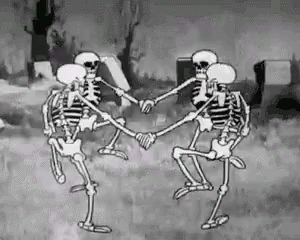
So let’s talk about yer bones! Yeah, that’s right, Captian Holt. I said –

An adult has (roughly) 206 bones (I say ‘roughly’! You can have non-pathological anatomical variation, such as lumbarised sacral vertebrae (an extra bone in your back) or accessory sesamoids like the flabella (a little bone at the back of the knee!))
A newborn has (roughly) 300 bones
That's a big difference! Almost 100 bones of difference! Where do they go?
Well, you see - as you get older, every time you come into the hospital we steal more of your bones...
Just kidding.
...Or am I
As an embryo, your skeleton is completely composed of cartilage. This gradually ossifies as you age, until, as an adult, you have a full skeleton, with only the interactive portions of joints being capped with hyaline cartilage.

[Paediatric normal whole leg radiograph, showing epiphyseal plates around the head of the femur, the femoral condyles, the proximal tibia, the distal tibia and the lateral malleoli that can mimic fractures. Courtesy of radiopaedia]
See all those weird blobs? Those are bones in the process of fusing together! The transverse lines that could be mistaken for fractures are actually epiphyseal plates – hyaline cartilage bridges between the shaft of a bone and what will become its tip, which don't attenuate x-rays, and thus appear black on our radiographs! This is where bone growth occurs - the cartilage forms a sort of template matrix that then ossifies into bone.
Compare our paediatric radiograph to the AP knee radiographs of an adult with no visible pathology:
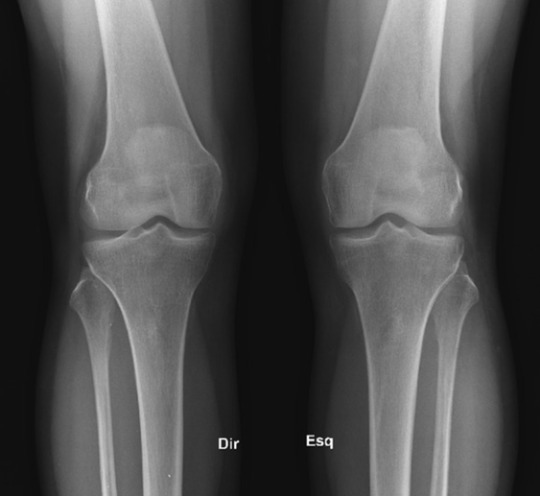
[Adult normal AP knee radiographs, showing fully fused bones. Courtesy of radiopaedia]
See how all those ragged pieces have joined up? That’s endochondral ossification, BABY!
This is how we can figure out the age of a paediatric service user from their bones! Certain bones form at different times.
Let’s check out the carpal bones – all those fiddly little bones in your wrist! Anyone who’s binged Hatecrimes MD – sorry, House MD as often as I have will know the classic acronym for remembering the names of these bones. Moving thumb side to pinkie side, we have…
Scared (Scaphoid - red)
Lovers (Lunate - dark blue)
Hate (Hamate - green)
To (Triquetrum - yellow)
Try (Trapezium - orange)
The (Trapezoid - light blue)
Coolest (Capitate - purple)
Positions (Pisiform - pink)
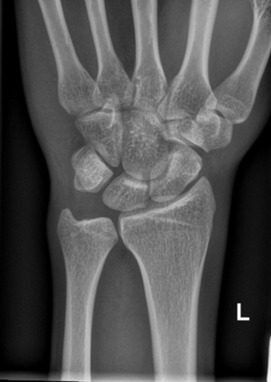
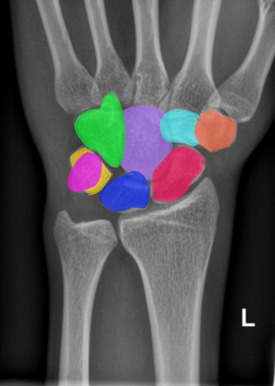
[Normal adult wrist radiograph, shown with and without coloured carpal bones. Courtesy of radiopaedia.]
But did you know that these bones form at different times?
The Capitate ossifies at 1-3 months
The Hamate ossifies at 2-4 months
The Triquetrum ossifies at 2-3 years
The Lunate ossifies at 2-4 years
The Scaphoid, Trapezium and Trapezoid ossify at 4-6 years
And the Pisiform ossifies at 8-12 years
So, I can look at this picture, and tell you that this child is approximately 3 years old, because their Capitate and Hamate have ossified, and their Triquetrum is just visible, starting to ossify below the thumb (circled!)
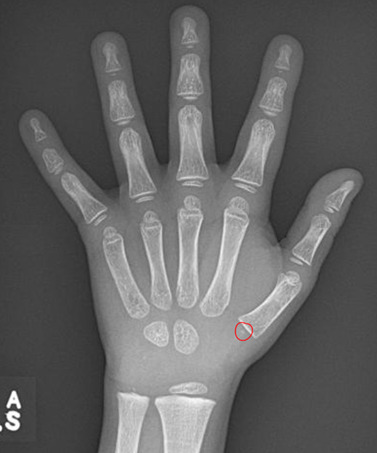
[Normal wrist radiograph of a paediatric patient, triquetral ossification centre circled. Courtesy of Radiopaedia.]
Your bones continue to form and fuse until you reach about 25! Your olecranon (the bump of your elbow) starts to ossify at 6-11 years, and fuses at 13-16 years! We can look at the base of your fifth metatarsal to age afab folks who are approx. 10 and amab folks who are approx. 12, as this bone fuses in the 2-4 years following these ages! The medial end of the clavicle can be used to assess your age from approximately 18-22, and your facial bones continue to ossify into adulthood! How cool is that?
If you’re over 25, fret not – there’s still plenty of funky stuff happening to your bones. But we’ll get into all of that next time, when we take a look at the function of osteoblasts and osteoclasts and explore all the cool little jobs that your bones perform within your body - it's more than you might think! So, tune in next time for more Bone facts...

And thank you for reading!
#medblr#halloween#spooky#skeleton#science side of tumblr#radiography#radiology#medicine#human anatomy#x rays#radley irradiates people#spoopy
30 notes
·
View notes
Text

.Whiskey.
Back from the doctor's and going to attempt writing. But medical tw and rant tw under the cut first.
So apparently my last doctor was fired for lying on insurance papers. She had me marked down as a quadrapalegic with severe cerebral palsy.
I have never had anything like that in my entire life. The only time paralysis was even mentioned in my entire past was the doctor who oversaw my mother's pregnancy warning her that with spinal cord deformities and spine diseases that paralysis was always possible, there was a chance I could have been born with it but I wasn't.
And even one look at my medical history will tell any doctor that I have never had cerebral palsy, (which for those who don't know is basically a brain injury caused by lack of oxygen in the womb) what I have is a sister disease to cerebral palsy and spina bifida.
I have Sacral Agenesis (missing the Sacrum of the spine) caused by Caudal Regression Syndrome. Basically big long fancy words to explain there's a deformity to my spine itself, I am missing bones in my spine. Literally that's all it means.
Spina Bifida - spinal cord deformity
Cerebral Palsy- brain injury
Caudal Regression Syndrome- spinal column deformity
There's a huge difference there!
And I am not paralyzed at all, I walk wearing KAFOs, knee, ankle and foot orthotics, AKA leg braces because I have muscle weakness from the knee down.
She marked me down as having Cerebral Palsy and paralysis because my insurance would pay higher for it because Caudal Regression is harder to prove because it's rarer.
Cerebral Palsy occurs in the US alone at a rate of 3 children in every 1000 births.
Caudal Regression Syndrome (which is what I actually have) occurs at a rate of 1-3 out of every 60,000 to 100,000 births in the US. (much rarer than Cerebral Palsy.)
Rant aside, going to refill my coffee and get to work. I'm just really pissed she ripped off my insurance because she wasn't even marking my diagnosis correctly!
Inbox: 15
Drafts: 31
8 notes
·
View notes
Text
Skeletal System Orthopedics Abbreviations
AKA = above the knee amputation
anti-CCP = anti-cyclic citrullinated peptide
AP = anteroposterior
BKA = below the knee amputation
BMD = bone mineral density
C1 = cervical vertebra 1
C2 = cervical vertebra 2
C3 = cervical vertebra 3
C4 = cervical vertebra 4
C5 = cervical vertebra 5
C6 = cervical vertebra 6
C7 = cervical vertebra 7
Ca = calcium
Ca²⁺ = calcium ion
CDH = congenital dislocation of the hip
DEXA = dual-energy x-ray absorptiometry
DXA = dual-energy x-ray absorptiometry
DIP = distal interphalangeal joint
DJD = degenerative joint disease
ESWT = extracorporeal shock wave therapy
Fx = fracture
L1 = lumbar vertebra 1
L2 = lumbar vertebra 2
L3 = lumbar vertebra 3
L4 = lumbar vertebra 4
L5 = lumbar vertebra 5
LLE = left lower extremity
LUE = left upper extremity
MCP = metacarpophalangeal joint
NSAID = nonsteroidal anti-inflammatory drug
OA = osteoarthritis
ORIF = open reduction and internal fixation
ortho = orthopedics
P = phosphorus
PIP = proximal interphalangeal joint
PT = physical therapy
QCT = quantitative computerized tomography
RA = rheumatoid arthritis
RF = rheumatoid factor
RLE = right lower extremity
ROM = range of motion
RUE = right upper extremity
S1 = first sacral vertebra
T1 = thoracic vertebra 1
T2 = thoracic vertebra 2
T3 = thoracic vertebra 3
T4 = thoracic vertebra 4
T5 = thoracic vertebra 5
T6 = thoracic vertebra 6
T7 = thoracic vertebra 7
T8 = thoracic vertebra 8
T9 = thoracic vertebra 9
T10 = thoracic vertebra 10
T11 = thoracic vertebra 11
T12 = thoracic vertebra 12
THR = total hip replacement
tib-fib = tibia-fibula
.
Patreon
#studyblr#notes#my notes#medical terminology#medical terms#medical flashcards#medical flash cards#medical terminology flashcards#medical terminology flash cards#medical language#medblr#medical notes#med notes#health science#health services#premed#nursing#scientific language#prefixes#suffixes#medical prefixes#medical suffixes#root words#medical root words#health terms#medical communication#medical recording#note cards#flashcards#flash cards
18 notes
·
View notes
Text

Reconstruction of the early dinosaur Herrerasaurus ischigualastensis from the Late Triassic (Carnian stage) Argentina. This genus was described by Osvaldo Reig back in 1963, but due to the fragmentary nature of the bones, the classification of the animal was controversial (opinions were expressed that it was a prosauropod or even a dinosaur outside the two main groups). Only in 1988 was a complete skeleton with a skull found, which allowed reconstructing the dinosaur and its approximate kinship. However, it is still unclear whether Herrerasaurus was an early theropod or whether it was closer to sauropodomorphs. The remains, named Ischisaurus cattoi and Frenguellisaurus ischigualastensis, were later assigned to Herrerasaurus.
Herrerasaurus is interesting for its rather large size for an early predatory dinosaur: some specimens of "Frenguellisaurus" reached 6 m. The skull was relatively small, but the jaws carried sharp saw-toothed teeth, including "fangs". There was also a shock-absorbing joint in the middle of the jaw, which allowed holding large prey. The hands were armed with three grasping fingers, and the longest of them was the third. The rudimentary fourth and fifth fingers were hidden by soft tissues. The pelvis of a Herrerasaurus is unusual. Only two sacral vertebrae fused with it (at least 3 in other dinosaurs), and the acetabulum was not completely open. At the same time, the pubic bone was directed not forward, but backward, as in maniraptorans, and carried a massive "boot". At one time, this served as the basis for Gregory Paul to designate the herrerasaurs as an early group in which bird-like features arose, and even to bring them closer to the "protoavis".
In this work, I tried out a style with shading using a black pencil, not a pen. It is much easier to apply shadows with a pencil, and I liked the result. It shows an extensive cover of filaments inspired by a possible "fluffy" ancestral state for ornithodirans (dinosaurs, pterosaurs and small groups close to them).
Black ballpoint pen and black colored pencils, 2023.
#herrerasaurus ischigualastensis#herrerasaurus#frenguellisaurus#ischisaurus#sanjuansaurus#staurikosaurus#herrerasauridae#saurischia#early dinosaurs#late triassic fauna#paleoart
23 notes
·
View notes
Text
that moment when you have a random menstrual cramp and you can feel all the bones in your sacral area moving around ;o;
#that's the sacroiliac joint babyyyy and it is not my friend#cw:#chronic illness#chronic pain#ehlers danlos syndrome
15 notes
·
View notes
Text
Also I NEED to tell you about bird pelvises. They're fucking weird.
In mammals, your pelvis is just your inominate bones (the things on the sides with the broad blade like parts) and you sacrum (the part in the middle. Made up of fused sacral vertebrae.)
Birds have those too, but they also have their fucking thoracic vertebrae fused in there too. Not all of them, usually around 3, but it's still fucking bizarre. And also at least one of their caudal (tail) vertebrae! All this stuck together stuff is called the synsacrum and it's WEIRD!
Oh, and birds don't have sacral vertebrae or lumbar vertebrae (sacral is in the pelvis in mammals, and lumbar is the lower back). They just have one category called lumbosacral, and they all go in the synsacrum. So weird.
Why are birds Like This? Because flying means it's important to have your body be as rigid as possible. That's why so many of their bones are fused. Apparently flying makes animals WEIRD.
5 notes
·
View notes
Text
In the universe of the Locked Tomb, I would be in the Sixth House
Situation 1: I am at work, stripping stalls. (For the non-horse people among us, that's when you fully empty all of the bedding and feed out, sweeping and scooping up every last speck, so the stall is ready to powerwash or disinfect or sit empty for a while or whatever.) I'm scooping old hay scraps and dust out of a feeder, when I find bones! I take a picture for my friends to look at and then hide them in the truck until lunch, when I can look at them properly. We discuss possible animal options, not convinced of any of them. At lunch, I have a better look: two long bones, connected at a joint with some of the small bones and limited ligaments remaining. The small bones in the joint are clearly the bones of the knee (or the human wrist) and the length of the bones mean I am either holding the radius and ulna of some kind of predator or the radius and metacarpal of some kind of herbivore. After some more examination, I realize it's the radius and metacarpal, as the distal tip of the ulna is still attached to the radius, but the head has fractured off, so I likely have most of a deer leg.
No, the horse did not eat a deer leg. Sometimes deer die in hay fields (or died in the past and happen to be brought to the surface as the hay grows) and their bones get baled up. This also happens with cow bones, when a field that was once for cows becomes a hay field. Also, sometimes snakes, birds, mice, and other small critters can get baled up.
Situation 2: we live in rural Nevada. Our across-the-street neighbors, ah... majorly fucked up a lot in the last 3 years, culminating in getting evicted in November. The owners of the property have come to begin demo on the property, which the tenants took from "old, worn, but serviceable" to "absolute pile of trash, house unlivable" in a few years. The owners are lovely folks and had us over to see the damages and to let us know we could take anything we thought was useful, since they're planning to just take everything away and start over. The one owner, after showing us around, mentioned finding some bones in an area that we pointed out was originally where the tenants had kept goats. I, of course, went "BONES! I'd love to see them!" so away we went. In a 20ft radius, we found:
a damaged skull
half of a lower jaw
neck vertebrae
probably lumbar vertebrae
sacral vertibrae
one rib
a part of a pelvis
most of a hind leg (half of the femur through the metacarpal)
It's definitely a goat, and telling the owner this really eased some of her tension. She was afraid it was a dog or something worse; based on the state of the property, they wouldn't have been shocked to find a human body. But no, just a goat. We assume the rest of the bones got scattered by the dogs. (I will be taking the bones to add to my collection of Found Animal Bones.)
#kiowa babbles#i love bones#comparative anatomy is my jam so as long as it's similar enough to either horse or human bones i can figure it out#so now my bones collection is the deer leg#a cow rib we found on our property#two cow metacarpals i found at the farm we used to keep the horses at in maryland#and soon i'll bring home all those parts of the goat#also i have a small collection of horse teeth#a baby tooth from a two year old#and both of my geldings' wolf teeth#plus a few other wolf teeth from other horses
6 notes
·
View notes